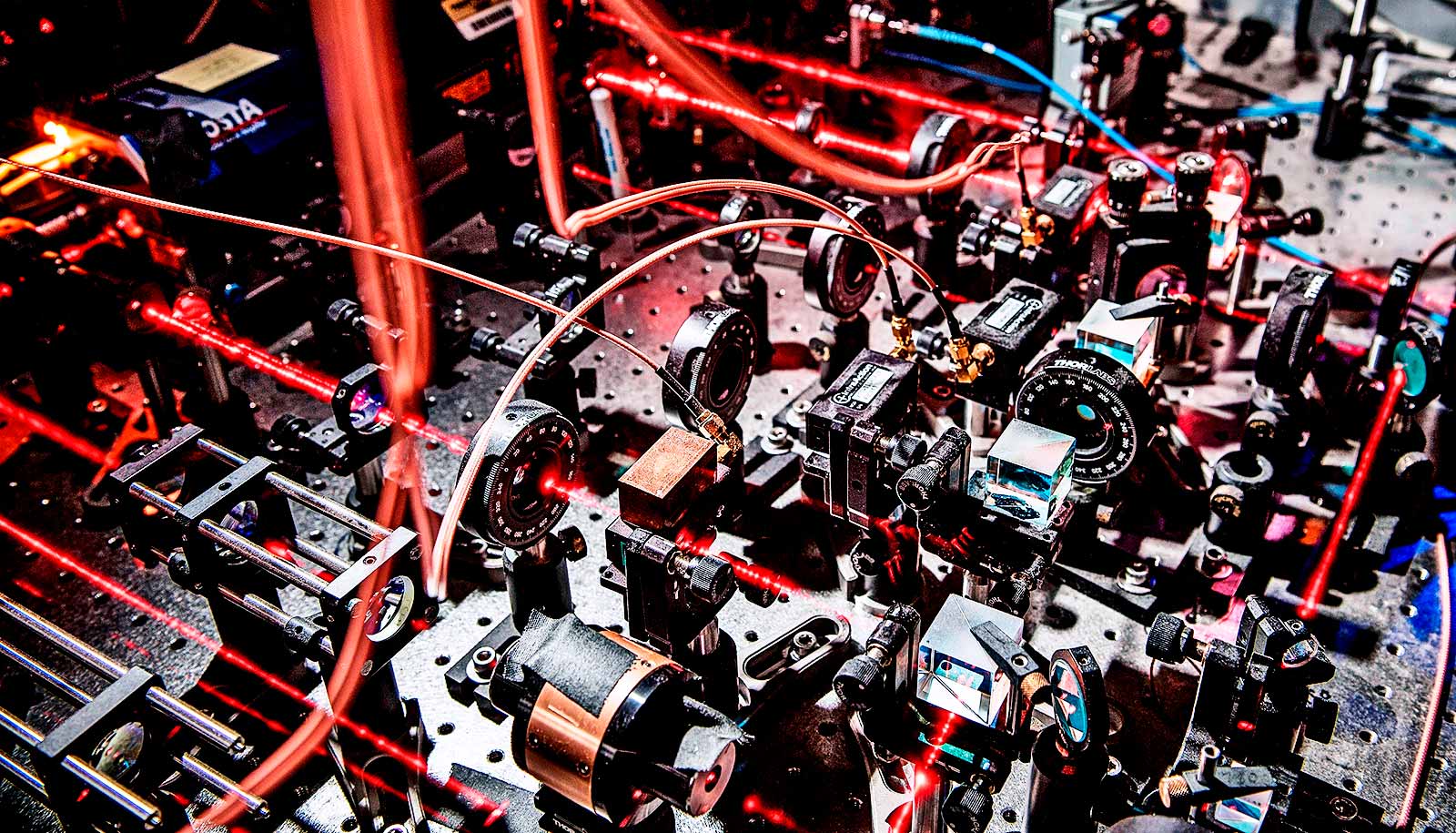Researchers have created a new testing ground for quantum systems in which they can turn certain particle interactions on and off.
The new method could potentially pave the way for advances in spintronics.
Spin transport electronics have the potential to revolutionize electronic devices as we know them, especially when it comes to computing. While standard electronics use an electron’s charge to encode information, spintronic devices rely on another intrinsic property of the electron: its spin.
Spintronics could be faster and more reliable than conventional electronics, as these devices use less power. However, the field is young and there are many questions researchers need to solve to improve their control of spin information. One of the most complex questions plaguing the field is how the signal carried by particles with spin, known as spin current, decays over time.
“The signal we need to make spintronics work, and to study these things, can decay. Just like we want good cell phone service to make a call, we want this signal to be strong,” says Chuan-Hsun Li, a graduate student in electrical and computer engineering at Purdue University. “When spin current decays, we lose the signal.”
Why spin-orbit coupling is key
In the real world, electrons don’t exist independently of everything around them and behave exactly how we expect them to. They interact with other particles and among different properties within themselves. The interaction between a particle’s spin (an intrinsic property) and momentum (an extrinsic property) is known as spin-orbit coupling.
According to a new paper in Nature Communications, spin-orbit coupling and interactions with other particles can dramatically enhance spin current decay in a quantum fluid called Bose-Einstein condensate (BEC).
“People want to manipulate spin formation so we can use it to encode information, and one way to do this is to use physical mechanisms like spin-orbit coupling,” Li says. “However, this can lead to some drawbacks, such as the loss of spin information.”
In the lab of Yong Chen, a professor of physics and astronomy, and electrical and computer engineering, the research team created something like a mini particle collider for BECs. Using lasers, researchers trapped and cooled Rubidium-87 atoms within a vacuum chamber nearly to absolute zero. (Physics junkies may recall that laser cooling technologies won the Nobel Prize in physics in 1997. Laser trapping won the Prize in 2018.)
At this point, the atoms become a BEC: the coldest and most mysterious of the five states of matter. As atoms get colder, they start to display wave-like properties. In this quantum state, they have an identity crisis; they overlap with one another and stop behaving like individuals. Although BEC isn’t technically a gas, this might be the easiest way to picture it—physicists casually refer to it as quantum fluid or quantum gas.
Inside the mini quantum fluid collider, Chen’s team sent two BECs with opposite spins smashing into one another. Like two clouds of gas would, they partially penetrate each other, delivering a spin current.
“A lot of fascinating phenomena occur when you collide two condensates. Originally, they’re superfluid, but when they collide, part of the friction can turn them to thermal gas,” Chen says. “Because we can control every parameter, this is a really efficient system to study these kinds of collisions.”
Flipping the quantum switch
Using this system, researchers can literally turn spin-orbit coupling on and off, which allows them to isolate its effect on spin current decay. This can’t be done with electrons in solid-state materials, which is part of what makes this system so powerful, Chen says.
So-called quantum gas is the cleanest system humans can make. There’s no disorder, which makes it possible to create a pure spin current and study its properties. Chen hopes to keep using this experimental testing ground and their bosonic spin current to further explore many fundamental questions in spin transport and quantum dynamics.
“One important challenge for spintronics and other related quantum technologies is to reduce decay so we can propagate spin information over longer distances, for longer times,” he says. “With this new knowledge of the role of spin-orbit coupling, this may help people gain new insights to reduce spin decay and potentially also design better spintronic devices.”
Purdue University, the Purdue Research Foundation, the National Science Foundation, the US Department of Energy, the Department of Defense, and Hong Kong Research Council supported the research.
Source: Purdue University



